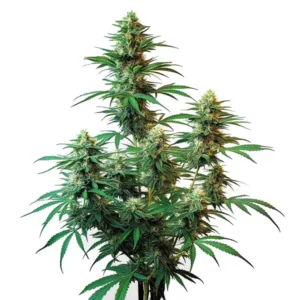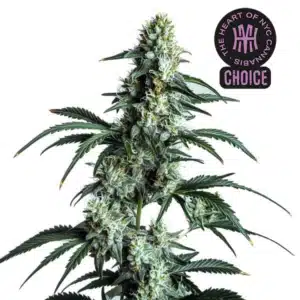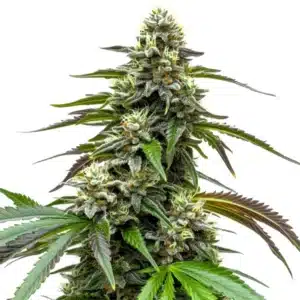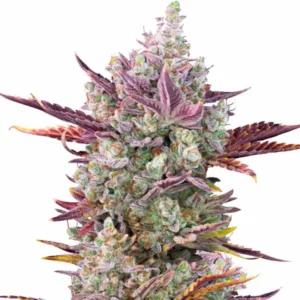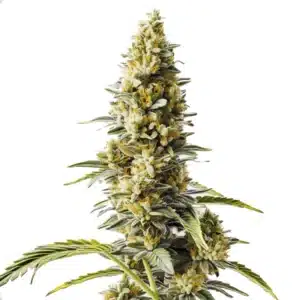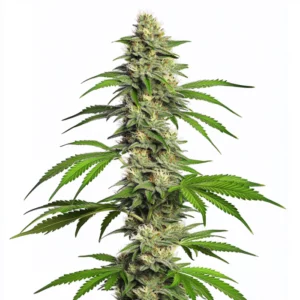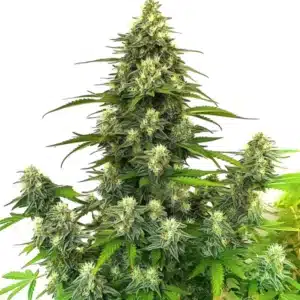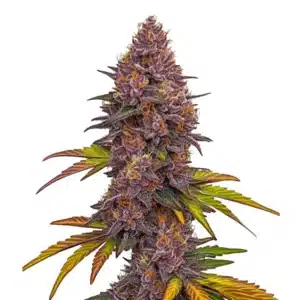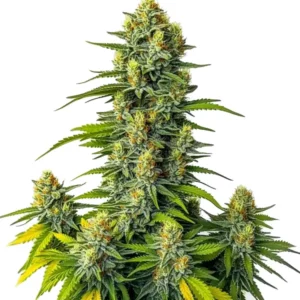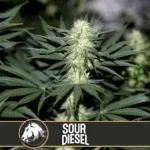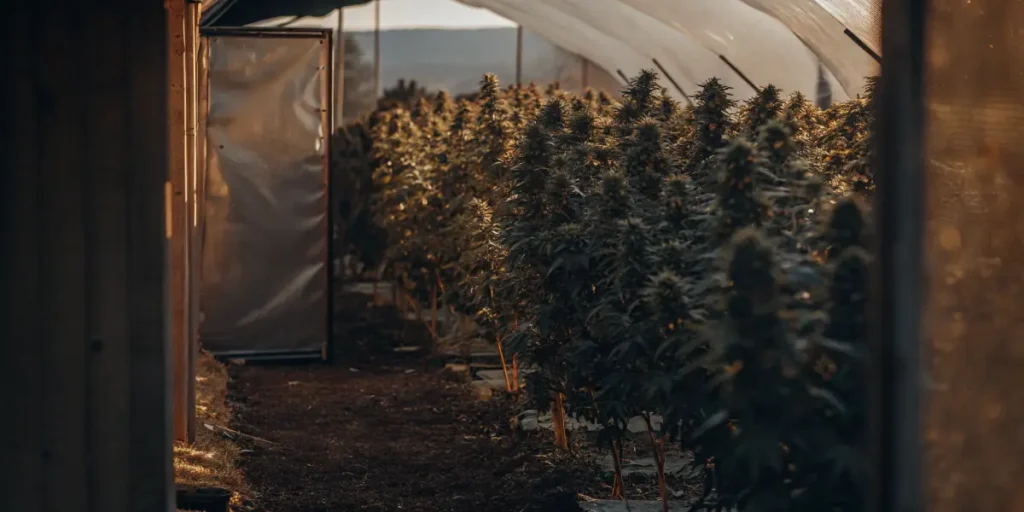
Growing Sour Diesel Auto Outdoors in Europe
Sour Diesel Auto is one of the most sought-after cannabis strains for outdoor growing, known for its fast growth, potent yields, and adaptability to different environments. For European growers, the key to success is knowing how to optimize the conditions specific to their region. In this guide, we’ll walk you through the process of growing Sour Diesel Auto outdoors in Europe, from choosing the right time to plant to managing climate challenges and maximizing your yields.
Knowing Sour Diesel Auto’s Growth Cycle in Europe
Sour Diesel Auto is an autoflowering strain, which means it flowers based on age rather than the light cycle, making it perfect for outdoor growing in Europe, where daylight hours vary dramatically across the seasons. Autoflowering strains like Sour Diesel Auto are known for their fast growth, often finishing their life cycle in just 8-10 weeks, making them ideal for multiple harvests throughout the season.
Recommended Strains
Sour Diesel Autoflower
-
THC: 16% - 23%
-
Type of seed: Autoflowering
-
Phenotype: 60% Sativa / 40% Indica
-
Flavor: Citrus, Diesel, Herbal
-
Life cycle of: 8 - 10 weeks
Sour Diesel HMC Edition
-
THC: 22% - 25%
-
Type of seed: Feminized
-
Phenotype: 70% Sativa / 30% Indica
-
Flavor: Citrus, Diesel, Earthy
-
Day to flower: 8 - 10 weeks
European growers need to take advantage of this short growth cycle by planting during the optimal time for their specific region. In southern Europe, where warm temperatures and long growing seasons prevail, Sour Diesel Auto can be grown successfully throughout spring, summer, and early autumn. In northern Europe, where summers are shorter and cooler, timing becomes even more critical to avoid frost.
Promos & Deals
Best Time to Plant Sour Diesel Auto in European Climates
The best time to plant Sour Diesel Auto outdoors in Europe depends heavily on your region’s climate. In southern Europe, where the growing season is longer, you can plant as early as April or May. This gives the plants plenty of time to complete their life cycle and be ready for harvest by the height of summer, with the potential for a second planting in late summer for an autumn harvest.
In northern Europe, where summers are shorter and frost can arrive earlier, the ideal planting time is around late May or early June. Starting later ensures that your plants won’t be exposed to frost and that they’ll get the most sunlight during the long summer days. Growers in these regions may also consider starting seeds indoors in early spring to give the plants a head start before moving them outdoors once the weather warms up.
Adapting Sour Diesel Auto to Different European Regions
Europe’s diverse climates mean that Sour Diesel Auto will require different care depending on where you’re growing. In southern Europe, where temperatures can soar and droughts are common, growers need to focus on water management and providing shade during the hottest part of the day. Using mulch or shade cloth can help keep the roots cool and retain moisture, ensuring your plants don’t get heat-stressed.
In northern Europe, where cooler temperatures and shorter summers can limit growth, providing protection from sudden cold snaps and ensuring that plants get as much sunlight as possible are the main concerns. Using greenhouses or cold frames can extend the growing season, while positioning plants in the sunniest part of your garden will maximize their light exposure and promote vigorous growth.
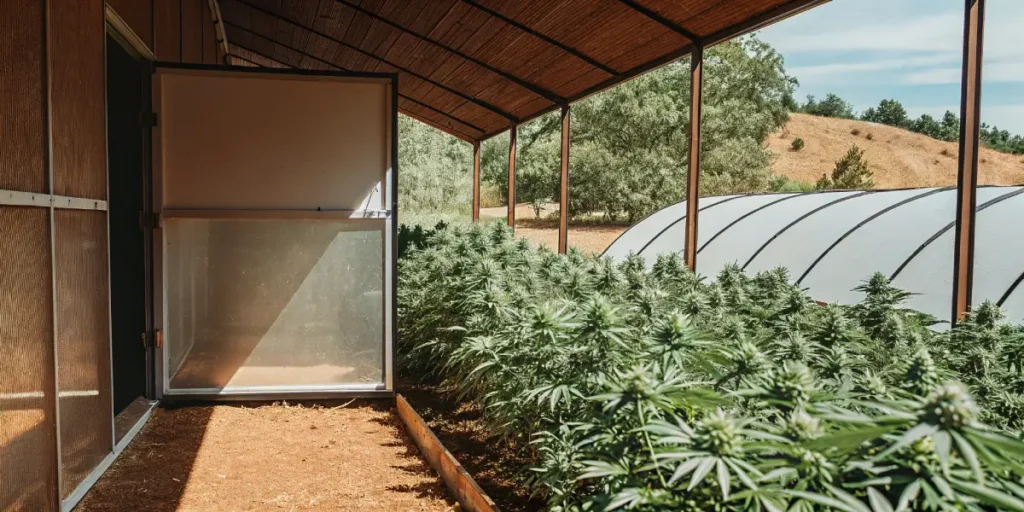
Preparing the Perfect Outdoor Environment for Sour Diesel Auto
Setting up the right growing environment is the foundation of a successful Sour Diesel Auto grow. From selecting the proper soil to optimizing sunlight exposure, the preparation phase is key to ensuring your plants thrive throughout their life cycle.
Choosing the Right Soil for Sour Diesel Auto in Europe
Soil quality is one of the most important factors when growing Sour Diesel Auto outdoors. This strain thrives in well-draining, nutrient-rich soil. In southern Europe, where the soil can be sandy or clay-heavy, you may need to amend the soil with compost or organic matter to improve its structure and nutrient content.
In northern Europe, where the soil is often heavier and retains more moisture, adding perlite or vermiculite can improve drainage and prevent waterlogging to prevent root rot. Additionally, testing your soil before planting and adjusting the pH to between 6.0 and 7.0 will help ensure that your plants can take up the nutrients they need efficiently.
Containers vs. Ground Planting for European Outdoor Grows
Deciding whether to plant Sour Diesel Auto directly in the ground or in containers depends on your location and the quality of your soil. In regions with poor soil quality or where space is limited, growing in containers allows you to control the soil mix and drainage. Fabric pots are an excellent choice, as they allow air to reach the roots, promoting better oxygenation and preventing overwatering.
However, planting directly in the ground has its advantages as well, especially if you have access to rich, fertile soil. In-ground planting allows the roots to spread more freely, which can lead to larger plants and higher yields. No matter which method you choose, ensuring that your plants have access to plenty of water and nutrients is key to growing Sour Diesel Auto outdoors in Europe.
Maximizing Sunlight Exposure for Sour Diesel Auto in Europe
Sunlight is important for the growth of Sour Diesel Auto, and in Europe, where daylight hours vary widely depending on the region, maximizing light exposure is essential. In southern Europe, you’ll have no trouble providing your plants with plenty of sunlight, but in northern Europe, you may need to be more strategic.
Planting in a south-facing location that receives at least 6-8 hours of direct sunlight a day is ideal. If you live in a region with shorter daylight hours, consider using reflective materials around your garden to bounce more light onto the plants. Additionally, pruning your plants to remove excess foliage can help improve light penetration to the lower parts of the plant, boosting overall growth and yield.
Climate and Environmental Considerations for Sour Diesel Auto in Europe
Knowing how to manage the European climate is key to achieving a successful outdoor grow. Sour Diesel Auto can thrive in different environments, but managing heat, cold, humidity, and other environmental factors will ensure that your plants remain healthy throughout their life cycle.
Managing Heat and Drought in Southern Europe
Southern Europe’s warm climate is generally ideal for growing cannabis, but the heat and potential for drought during the summer months can stress your plants if not managed properly. Sour Diesel Auto requires consistent watering, especially during heatwaves, so make sure you’re providing enough water to keep the soil moist but not waterlogged.
Using mulch around the base of your plants can help retain moisture and keep the roots cool. Additionally, consider shading your plants during the hottest part of the day to prevent heat stress and sunburn. Ensuring that your plants are hydrated and protected from excessive heat will help them thrive in southern Europe’s warm conditions.
Protecting Sour Diesel Auto from Cold and Frost in Northern Europe
In northern Europe, where cooler temperatures and early frosts are a concern, protecting your Sour Diesel Auto plants from the cold is essential. Starting your seeds indoors and transplanting them outdoors once the risk of frost has passed can give your plants a head start in the shorter growing season.
Using greenhouses or cold frames can extend the growing season by providing a controlled environment for your plants. Additionally, covering your plants with frost blankets or row covers on cold nights can protect them from unexpected temperature drops. By managing the cold effectively, you can still achieve a successful harvest of Sour Diesel Auto outdoors in northern Europe.
Balancing Humidity and Ventilation for Optimal Growth in Europe
Humidity can have a significant impact on the growth of your Sour Diesel Auto plants, particularly in humid regions of Europe. While moderate humidity levels are beneficial during the vegetative stage, excessive moisture during the flowering stage can lead to mold and mildew, which can ruin your crop.
To prevent this, ensure good air circulation around your plants by spacing them adequately and removing excess foliage. If you’re growing in a particularly humid region, consider using fans to improve ventilation or moving your plants indoors during periods of heavy rain. Managing humidity and ventilation effectively will protect your plants from mold and ensure a high-quality harvest.
Nutrients and Watering Needs for Sour Diesel Auto in Europe
Feeding and watering your Sour Diesel Auto plants correctly is key for a successful outdoor grow in Europe. Each region has its own unique challenges, from southern Europe’s arid conditions to northern Europe’s moisture-rich environments. Knowing how to provide the right nutrients and maintain proper watering schedules will keep your plants healthy and productive.
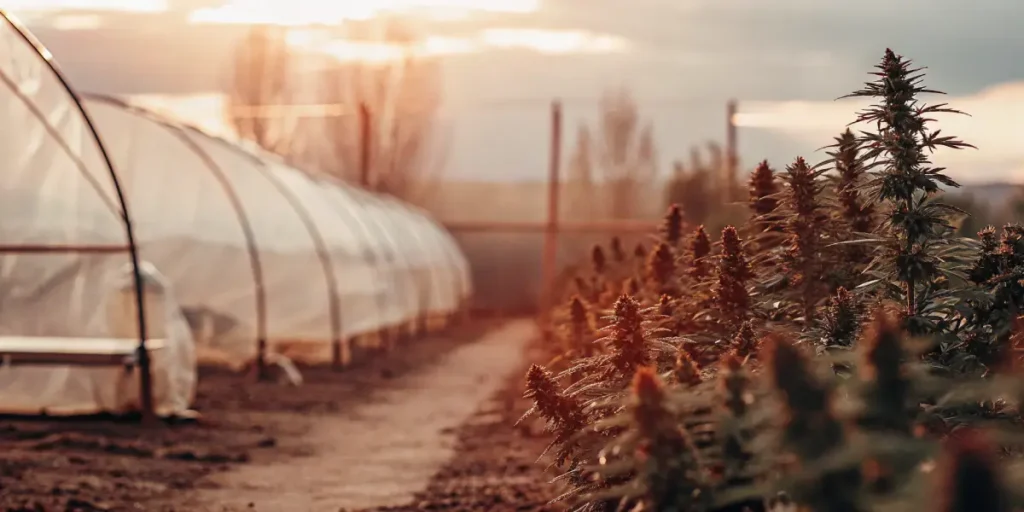
Organic vs Synthetic Nutrients for Healthy Growth
When growing Sour Diesel Auto outdoors in Europe, you’ll need to decide whether to use organic or synthetic nutrients. Both have their advantages, but it’s important to choose the one that best suits your growing style and environment.
Organic nutrients, such as compost, worm castings, and bat guano, are slow-release and help build the overall health of your soil. This method is ideal for growers who want a more natural approach to cultivation. Organic nutrients enrich the soil, which can be especially beneficial in regions with poor soil quality.
Synthetic nutrients, on the other hand, offer a more immediate boost to your plants. These fertilizers are often easier to control and can provide Sour Diesel Auto with the exact amounts of nutrients it needs at different stages of growth. However, you need to be cautious, as overfeeding with synthetic fertilizers can lead to nutrient burn, which can damage your plants.
Whether you choose organic or synthetic nutrients, ensuring your plants receive the right balance of nitrogen, phosphorus, and potassium throughout their life cycle is essential for optimal growth. Monitoring your plants for signs of nutrient deficiencies will help you adjust your feeding schedule accordingly.
Watering Techniques for Sour Diesel Auto in European Summers
Watering is one of the most important aspects of growing Sour Diesel Auto outdoors in Europe. In southern Europe, where temperatures can soar during the summer, keeping your plants well-watered is critical to avoid drought stress. The key is to water deeply and consistently without overwatering, as Sour Diesel Auto’s roots need oxygen as well.
Using drip irrigation systems can be a great way to ensure that your plants receive a steady supply of water without saturating the soil. Additionally, mulching around your plants will help retain moisture and reduce the frequency of watering during the hottest months.
In northern Europe, where rainfall is more common, you’ll need to be cautious of overwatering. In regions where the soil retains moisture for long periods, make sure your plants have good drainage to prevent root rot. Watering less frequently but deeply will encourage strong root development, ensuring your plants can withstand drier spells when necessary.
Preventing Nutrient Deficiencies in European Soils
The natural soil composition across Europe varies, and depending on your location, you may encounter nutrient deficiencies that need to be addressed. In sandy soils, which are common in southern Europe, nutrients can be washed away easily, leaving your plants lacking essential minerals. In these cases, regular feeding with a balanced fertilizer is important to keep your plants healthy.
In northern Europe, where soil tends to be heavier and more acidic, deficiencies in key nutrients like calcium and magnesium can occur. Testing your soil before planting and amending it with lime or other supplements can help raise the pH and improve nutrient availability.
Pay attention to your plants’ leaves, yellowing or spotting can indicate deficiencies in nitrogen, phosphorus, or potassium. Addressing these issues early on will help ensure your Sour Diesel Auto plants remain strong throughout their growth cycle, leading to a successful outdoor harvest in Europe.
Flowering and Harvesting Sour Diesel Auto in European Climates
The flowering and harvesting stages are the most rewarding parts of growing Sour Diesel Auto outdoors in Europe. This is when your plants start producing the buds you’ve worked so hard to grow. However, managing these stages properly is essential for ensuring high-quality, potent yields.
Monitoring Flowering Time in Sour Diesel Auto Based on European Weather
Sour Diesel Auto typically begins flowering automatically after about 4-6 weeks, regardless of the light cycle. However, the flowering stage is sensitive to environmental conditions, so monitoring the weather closely during this phase is important, especially in Europe’s varied climates.
In southern Europe, where warm, dry weather prevails during the summer, flowering tends to progress smoothly. However, if you’re growing in northern Europe, unexpected rainstorms or cooler temperatures can pose a risk during this stage. If rain is in the forecast, consider using temporary covers to protect your buds from moisture, which can lead to mold or mildew.
Monitor your plants closely during the flowering phase by regularly checking the trichomes (the resin glands on the buds). When the trichomes turn from clear to cloudy, it’s a sign that your buds are nearing their peak potency. Timing your harvest correctly based on weather conditions and trichome development is essential to getting the best out of your Sour Diesel Auto crop in Europe.
How to Time Your Harvest Before Autumn Rains in Europe
Timing your harvest is critical, especially in northern Europe, where autumn rains can arrive early and compromise your crop. If you’re growing Sour Diesel Auto outdoors in Europe, it’s essential to plan your harvest around the weather to avoid losing your buds to excess moisture.
As the flowering stage progresses, keep an eye on the weather forecast. If heavy rain is expected before your plants are ready for harvest, consider covering them with plastic or moving them under a shelter to protect them from moisture. Ideally, you want to harvest your plants during a dry spell to ensure that your buds don’t get wet, which could cause mold during the curing process.
Harvest your Sour Diesel Auto when the trichomes are mostly cloudy with a few turning amber, which indicates peak potency. Cutting your plants in the morning when moisture levels are lower will also help prevent mold. Proper timing and preparation will ensure that your harvest is successful, even with Europe’s unpredictable autumn weather.
Best Curing and Storage Practices for Long-Term Quality in Europe
Once you’ve harvested your Sour Diesel Auto plants, the curing process is just as important for preserving the flavor, potency, and overall quality of your buds. Proper curing allows the chlorophyll to break down, which enhances the smoothness and aroma of the final product.
After trimming your buds, hang them in a cool, dark room with good air circulation for about 7-10 days. The temperature should be around 18-22°C, and humidity levels should be between 50-60%. Once the buds are dry, place them in airtight glass jars for curing. Open the jars daily for the first two weeks to release excess moisture and prevent mold.
Properly cured Sour Diesel Auto buds can be stored for months without losing potency or flavor. Storing them in a cool, dark place in sealed containers will help preserve their quality for the long term. With careful curing and storage, you’ll enjoy your outdoor harvest for many months to come.
Pests and Disease Prevention for Sour Diesel Auto in Europe
Pests and diseases are an inevitable challenge for outdoor cannabis growers, and Europe’s diverse climates present unique threats depending on the region. Knowing how to prevent and manage these issues is essential for protecting your Sour Diesel Auto plants throughout the growing season.
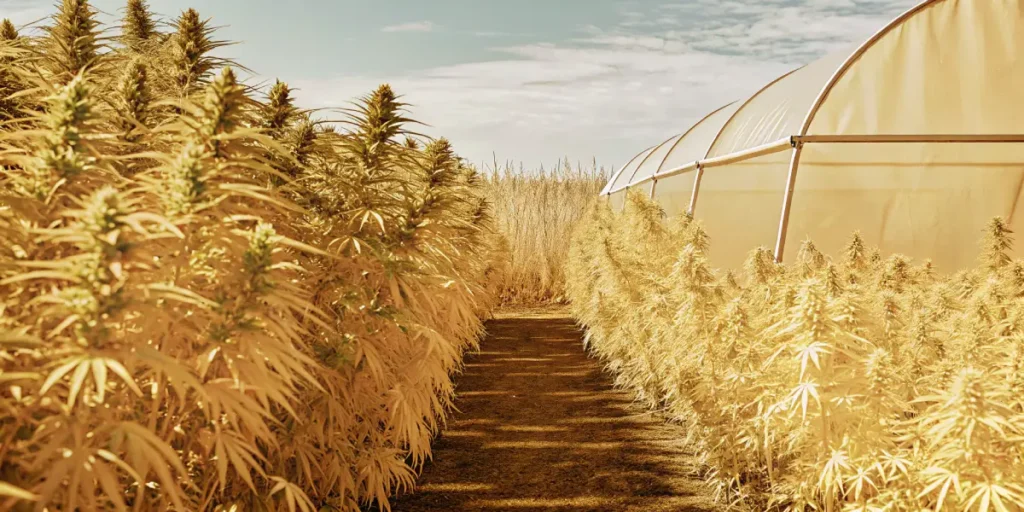
Common Pests for Outdoor Sour Diesel Auto in Europe and How to Prevent Them
European outdoor cannabis grows are prone to pests such as aphids, spider mites, and caterpillars, which can damage your plants if not controlled. Preventing pests starts with regular inspection of your plants. Check the undersides of leaves and the buds themselves for signs of pests like small holes, discoloration, or webbing.
Using organic pest deterrents, such as neem oil or insecticidal soap, can help keep these pests at bay without harming your plants. Additionally, companion planting with herbs like basil or marigold can naturally repel insects. Maintaining a clean growing environment and removing dead plant matter will also reduce the risk of pest infestations.
For larger pests, such as deer or rabbits, consider using netting or fencing around your grow area. Being proactive about pest control will save your Sour Diesel Auto plants from significant damage as they grow outdoors in Europe.
Managing Mold and Mildew in Humid European Regions
Mold and mildew are common threats in Europe’s more humid regions, particularly during the flowering stage when Sour Diesel Auto’s dense buds are more susceptible. If left unchecked, mold can ruin an entire crop, so prevention is key.
Ensuring good air circulation around your plants is one of the best ways to prevent mold. Pruning excess foliage and spacing your plants adequately will help improve airflow. In particularly humid climates, using fans or temporary shelters during periods of heavy rain can help keep moisture levels under control. Inspecting your plants regularly for signs of powdery mildew or bud rot will allow you to catch the problem early and take action before it spreads.
Week-by-Week Care for Sour Diesel Auto Outdoors in Europe
Growing Sour Diesel Auto outdoors in Europe requires consistent, week-by-week care to ensure optimal results. By breaking down your grow into weekly tasks, you can stay on top of the plant’s needs throughout each stage of its life cycle, from germination to harvest.
Week 1-3: Germination and Early Growth
During the first few weeks, your Sour Diesel Auto seeds will germinate and begin developing their root systems. Start by planting your seeds in small pots or directly in the ground if temperatures are warm enough. Keep the soil moist but not waterlogged, as overwatering can drown the young seedlings.
Once the plants develop their first set of true leaves, you can begin lightly feeding them with a nitrogen-rich fertilizer to promote strong vegetative growth. In northern Europe, starting seeds indoors during early spring will give them a head start before transplanting outdoors.
Week 4-6: Vegetative Growth
As your Sour Diesel Auto plants enter the vegetative stage, they will begin growing rapidly. During this time, continue feeding with a nitrogen-heavy nutrient solution to support leaf and stem development. Make sure your plants are getting enough sunlight and adjust their position if necessary to maximize light exposure.
Pruning or low-stress training (LST) techniques can help improve airflow and light penetration, which is especially useful in regions with shorter daylight hours. Keep the soil moist, but allow the top inch to dry out between waterings to prevent root rot.
Week 7-9: Flowering Stage Begins
Around the seventh week, your Sour Diesel Auto plants will begin to flower. At this point, switch to a bloom fertilizer that’s higher in phosphorus and potassium to support bud development. Pay close attention to weather conditions, rain and humidity can negatively impact the flowering stage, especially in northern Europe.
Ensure good air circulation around your plants by spacing them adequately and removing any excess foliage. Continue monitoring for pests and diseases, as the flowering stage is when plants are most vulnerable.
Week 10-12: Final Flowering and Bud Development
By weeks 10 to 12, your Sour Diesel Auto plants will be in full bloom, and the buds will begin to swell and develop their signature aroma. During this stage, avoid feeding with nitrogen and focus on phosphorus and potassium-rich fertilizers to maximize bud size and potency.
Monitor the trichomes regularly to determine when your plants are ready for harvest. When the trichomes turn from clear to cloudy, it’s time to prepare for harvest. Reduce watering during the final weeks to concentrate the plant’s energy into the buds.
Week 13-14: Harvest Time and Curing
By week 13 or 14, your Sour Diesel Auto plants should be ready for harvest. Harvesting during a dry spell is ideal to avoid excess moisture on the buds. Cut your plants early in the morning when moisture levels are lowest, and begin the drying process immediately.
Hang your trimmed buds in a dark, cool room with good air circulation to dry for about a week. After drying, cure the buds in airtight glass jars, opening them daily to release moisture and prevent mold. Proper curing will enhance the flavor, potency, and overall quality of your Sour Diesel Auto crop, ensuring that your outdoor harvest in Europe is a success.
FAQs
What is the best time to plant Sour Diesel Auto outdoors in Europe?
The ideal planting time for Sour Diesel Auto depends on your region. In southern Europe, you can start as early as April or May and even achieve multiple harvests per season. In northern Europe, late May to early June is recommended to avoid frost and take advantage of long summer days.
Can Sour Diesel Auto handle the different climates across Europe?
Yes, Sour Diesel Auto is highly adaptable to Europe’s varied climates. In southern regions, focus on managing heat and drought with mulching and shade. In northern areas, protect your plants from cold snaps and maximize sunlight with strategic placement and, if needed, greenhouses or cold frames.
What are the key tips for growing Sour Diesel Auto successfully in European soil?
Ensure well-draining, nutrient-rich soil with a pH between 6.0 and 7.0. In southern Europe, amend sandy or clay-heavy soil with compost. In northern regions, improve drainage in heavier soils using perlite or vermiculite. Whether using containers or planting directly in the ground, optimizing soil quality is essential for healthy growth and yields.

